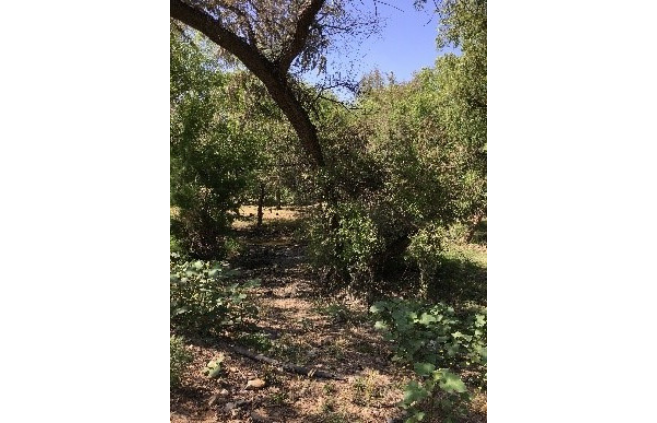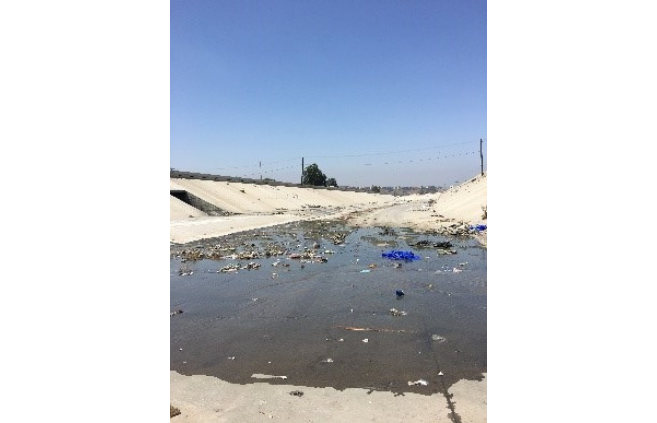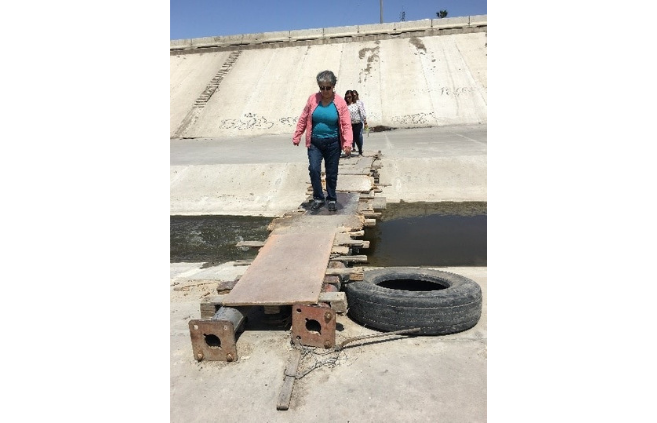How Potassium Can Help Blood Pressure and Why You Need Bananas
High Blood Pressure in America
High blood pressure is a condition that occurs when the force of pumping blood is too intense for the walls of the arteries. With millions of Americans affected each year, it has become one of the leading causes of strokes and heart attacks. While many different factors contribute to the development of hypertension, poor dietary and lifestyle choices have been shown to be largely responsible.
Consuming sodium in excess is the main culprit here. The typical American diet is no stranger to salty foods, leading many to exceed their recommended daily intake. Contrarily, one of the nutrients we are consistently under consuming is potassium. To be specific, we’re only getting about half of our daily value.
Potassium Supports More than Just Heart Health
This mineral is critical for our bodies to function properly. In particular, potassium supports strong muscle health and rapid healing from injury. In case you didn’t know, your heart is one of the most important muscles in your body.
Potassium works to relax muscular tissue for the purposes of recovery and injury prevention. In the case of high blood pressure, taking in enough of this nutrient helps ease the walls of your arteries, reducing the excessive stress they are under. Understandably, several studies have indicated a link between low potassium levels and high blood pressure, thus leading to an increased risk of stroke.
Not only does potassium work to reduce the damage caused by excess sodium consumption, but it also helps speeds up how our body processes it. Eating too many salty foods leads to a water imbalance in our bodies. Essentially, sodium sucks up the water in our cells and slowly dehydrates us. In this instance, potassium serves as a vasodilator.
That’s a big, fancy word for blood vessel expansion. So, while sodium increases the amount of pressure our blood is putting on our arteries, potassium helps them relax in order to accommodate for the excess force. Not only does this help lessen the immense stress on your heart, but the increased volume of blood helps move the sodium out of the body faster.
How to Get More Potassium Into Your Diet
So, now that we’ve delved into the science behind high blood pressure, here’s how to introduce the solution into your life.
It’s fairly well-known that bananas are the glorified poster child in terms of optimal sources of potassium – a title rightfully earned.
Bananas contain about 10% of our daily recommended value of potassium. That’s a fairly noteworthy amount, especially because it’s all naturally occurring. While we’re a little bit biased, bananas are pretty much the perfect fruit to incorporate into your diet.
How Else Do Bananas Help?
So, we know that they’re high in potassium, but what else do they bring to the table?
Well, for starters, they have a relatively balanced carbohydrate content. For the number of calories in a banana, the amount of carbs that you’re taking in is completely reasonable; you get the extra dose of energy without the concern of excess carbohydrates being converted into sugar.
Moreover, bananas have a relatively low sugar content, making them a healthy choice for those struggling with the effects of an insulin imbalance or diabetes.
But, perhaps the most important factor of all, is that bananas hardly have any sodium in them. When you eat the fruit, you’re doing everything to help your body recover from hypertension and avoiding anything that could exacerbate it.
With that being said, diet is only a facet of a comprehensive plan to reduce high blood pressure. Alongside what we eat, our activity levels factor heavily into our risk of hypertension. Those leading a sedentary lifestyle are also at an increased risk of high blood pressure as their heart does not get the proper stimulation it needs to stay strong and healthy.
One of the best ways to improve heart health is by incorporating more cardio into your everyday routine. Since bananas help energize the body and digest quickly, this makes them the ideal pre-workout snack.
Sleep and Stress Is a Huge Factor in Health
Another important lifestyle factor to consider is sleeping patterns. Our muscles repair themselves while we sleep so it becomes ever so important to get a full night’s rest. As mentioned throughout, your heart is just one big muscle. While it has its variances from other muscles, it will still behave the same way as other ones in your body.
Hypertension places a significant amount of stress on the walls of your arteries and it’s vital to repair any damage before it gets out of hand. Alongside all of their other wonderful qualities, bananas help promote healthy sleep, allowing your muscles to get the rehabilitation they need.
Bananas are packed full of tryptophan which produces a head to toe calming sensation. Tryptophan can not only help you fall asleep faster but also allows you to rest longer. This proves to be an invaluable resource when it comes to helping your heart recover.
While physical factors contribute significantly to high blood pressure, mental factors play a role as well.
Stress management is vital to getting hypertension under control. When you’re in a tense state, your body’s healing abilities are one of the first things to go. This is particularly problematic for those already suffering from high blood pressure as it reduces the rate at which your heart and arteries correct the damage associated with the excess force from the blood.
Bananas can help alleviate this as they’re full of vitamins and minerals that can help balance the chemicals in your brain. In addition, this fruit has been shown to promote serotonin production which helps combat the effects of stress. Even if you aren’t able to drastically change the external factors that are causing your tension, eating a banana can help reduce the physiological response that your body experiences.
All in all, managing high blood pressure is an ongoing and multifaceted approach. By taking several steps to improve your diet, your physical activity levels, and your mental health, you can successfully manage the condition. If you’re looking for an easy way to prioritize your heart health, we encourage you to start incorporating more bananas into your diet. As a whole food, all its different components will work in their unique ways to alleviate high blood pressure.
Should You Refrigerate Bananas
We’ve all been there: buying a perfect bunch of bananas, only for them to turn brown and spotty after a few days. Don’t get us wrong, we love banana bread as much as the next person, but we’d also prefer to enjoy bananas in their natural state.
So we’re left with the age-old question: how can we extend the life of our produce?
Banana Storage
The answer lies in how you store your bananas. Contrary to popular belief, storing your bananas in the fridge may actually prolong the ripeness stage. Let’s start by explaining some of the science behind it.
There is a myth that refrigerating bananas has a tendency to speed up the decomposition process. After all, if you’ve ever put a bunch of bananas in the fridge, you’ll notice that the peel will soon turn brown. But this is merely an aesthetic response and does not reflect the fruit inside.
In fact, the cold temperatures in the fridge help slow down the conversion of starches into sugar. This process is exactly what causes overripe bananas to be so sweet. So, while the peel may make it seem that your produce is expired, the fruit inside is in its prime state.
Timing is everything when it comes to refrigerating bananas. If you place your produce in the fridge while it’s still green, you’ll slow down the ripening process too early, perhaps even preventing it altogether. You want to allow plenty of time for some of the starches to convert to sugar or else you’ll be left with bitter fruit.
Likewise, putting the bananas in too late will do little in preventing decay. As the fruit begins to break down, it gives off ethylene gas. This plays a major role in speeding up the decay process. In fact, it’s so strong that it will even promote the rapid ripening of other fruits and vegetables nearby.
When To Refrigerate Your Bananas
The ideal time to place bananas in the fridge is when they are completely yellow and beginning to show signs of small brown spots. At this point, enough of the starches have been converted into sugars and the fruit has its prime flavor, which is what we’re trying to prolong. When stored at this stage of ripeness, they will last up to a week.
While chilling bananas is the key to keeping them fresh, there are a few other things you can do to help extend their life. For starters, avoid peeling the bananas before you intend on consuming them. While the darkened peel may be unsettling, know that it is no representation of the fruit inside. Exposing the flesh of the fruit to air will only speed up the decay process.
In addition, make sure to pull apart your bunches of bananas before you refrigerate them. While many believe that keeping the fruit together will prolong its freshness, it could actually speed it up. In the instance that one of your bananas begins to decay, splitting them up will reduce the secondhand effect it has on the rest of your produce.
Refrigerator Placement Matters
Once they’re in the fridge, make sure to place them in the respective produce drawer. Often, these are at the bottom and intentionally closed off from the rest of the contents of the fridge.
Produce is very sensitive to other forms of decay so placing it next to something like leftovers could promote the opposite effect of what you’re going for. Plus, it’s important to keep your bananas away from the light or the cooling unit. Any excessive heat from the lightbulb can damage the fruit inside while unintended freezing can make it near impossible to peel your banana.
As time goes on, make sure to clear out any overripe produce from your produce drawer. Just as bananas give off ethylene, plenty of other fruits and vegetables do the same. As much as we’d like to offer advice to prevent these from going bad as well, we’re only attuned to bananas and their unique ripening process.
What To Do With Green Bananas
Since timing is so important for extending the lifespan of your produce, you may be wondering what to do with your green bananas. If you’re interested in refrigerating your bunch but it’s simply not ripe enough, there are a few different things you can do to jumpstart this process.
For starters, placing your bananas next to ripe fruit can help speed up the process. As mentioned above, the ethylene gas let off by other types of produce can speed up the decay. This also means that it can fast track the time it takes for your bananas to ripen. Just make sure to keep a close eye on the color of your bananas. Without close supervision, your green fruit can quickly turn brown over the course of a day.
If this seems too risky for you, don’t worry, we get it. There are plenty of other ways to get your bananas ready for chilling. Try hanging the bunch from a banana tree. Not only do these special fruit stands help prevent bruising to the flesh, but they also increase airflow to the banana. An oxygen-rich environment will only help speed up the starch to sugar conversion process.
How ever you decide to store your bunches of bananas, be mindful of one thing: that the space is room temperature. This environment is ideal for ripening as the mild temperature neither slows nor accelerates the starch-sugar breakdown.
The best spot to keep your bananas as they ripen is in your kitchen, in a spot that is hidden from direct sunlight. Also, pay mind to the appliances close by; try to keep your bunch away from heated appliances, like an oven, as well as cooling appliances, like the freezer. After a few days, your bananas will be ready to be placed in the fridge.
So there you have it, our best-kept secret for keeping your bananas as fresh as possible. With a little preparation, you can extend the life of your produce and significantly cut back on waste. Now that’s something to smile about.
The Women of Chilpancingo

Tijuana, one of the busiest land border crossings in the world, is also home to over 300 maquiladoras, or assembly plants. While this offers several job opportunities, it also often results in the unregulated pollution of waterways and local communities.
In the 1980s and 90s, a fierce group of stay-at-home mothers decided to fight against the contamination that was affecting their children and community. They banded together as Colectivo Chilpancingo, and after a decade of work, successfully lobbied the government in closing a battery recycling plant and secured a commitment from the government to safely dispose of the over 45,000 tons of waste that the plant left behind.

Today, Colectivo Chilpancingo, in partnership with the Environmental Health Coalition and the GROW program, continues the fight for environmental justice, defending the right to live in healthy and sustainable communities. In 2011, the Alamar River began to be channelized, depleting the area of its natural ecosystem, an area of natural recreation, and displacing part of the community. Today, we fight to stop channelization and protect the remaining 2.5 miles of river and surrounding forest, the only protected natural space in Tijuana.
There is a stark difference between the channelized and un-channelized portions of the river. Jorge Calderon who lives alongside a portion of the protected river, shared why it’s important to protect the river:
“It is the only lung left in the city of Tijuana, it’s our fresh air. Mother Nature was good to us and gave us this small piece of paradise. What are we going to leave for our grandchildren? Will they have to go to National Geographic to learn of the butterflies, the carpenter birds, and the insects that are native to this beautiful piece of paradise?”

Meanwhile, along the channelized portion, the Chilpancingo community has been divided. Trash and pollution now plague the once nature-rich neighborhood. The displaced families are now compelled to take up shelter in shanty towns across the channel, and women and children are forced to cross a freeway and haphazardly constructed paths to make their way across the polluted channel and into their town to work or attend school.
Through the work being done by the Environmental Health Coalition and the GROW program, we support these communities along our border in their struggle for environmental justice, improving air pollution and preserving the river.
